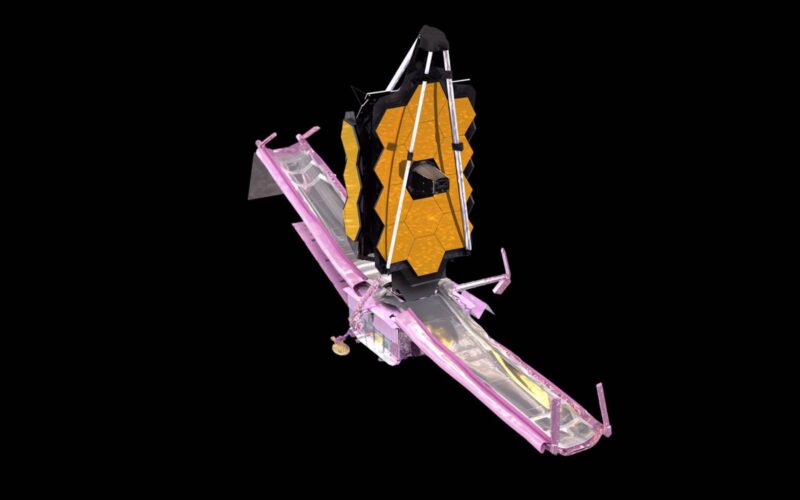NASA’s James Webb Space Telescope (JWST) is approaching the midpoint between the Earth and the second Lagrange point (L2), a stable deployment spot where the Earth and Sun align.
The spacecraft is slowly deploying its sunshield, a procedure that began on the third day following the launch, as soon as it passed the Lunar orbit.
The current step, according to NASA’s timeline, is the deployment of the tower assembly, which houses much of telescope’s equipment, including mirrors. Once deployed, the tower will allow room for the protective membrane of the sunshield to unfold and, on the sixth day, begin extending the booms that will stretch the sunshield out.
The deployment spot of the telescope, the L2 point, where it will be able to orbit the Sun without deviating from the Earth, is still 800,000 kilometers (approximately 500,000 miles) away. On December 30, the telescope commenced its fifth day of travel and is nearly half-way to its destination.
However, it will take the telescope more than 24 days to complete the remainder of its journey as it decelerates, deploys its instruments, and enters the orbit around the L2.
According to NASA, deploying the sunshield is the most complex part of the procedure. The telescope’s shield, which consists of five layers of plastic film, each thinner than a human hair, was folded during the launch, and is being slowly deployed under the command of controlling scientists.
It is designed to protect the JWST’s sensitive instruments from electromagnetic waves radiating from the Sun and the Earth.
The telescope’s mirrors, which will start to unfold on the 10th day of the journey, will be able to collect infrared radiation from the earliest galaxies in the universe.
The JWST was launched on December 25, 2021. It is the largest and the most powerful space telescope ever developed, and has been in the works for over two decades.

